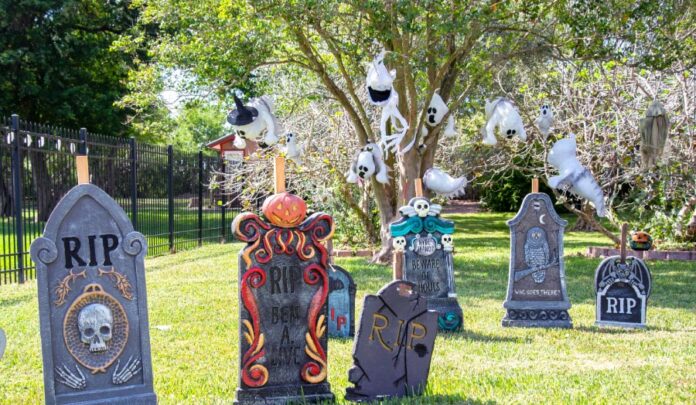“Oh, there’s no place like home for the holidays …”
Ever since Perry Como recorded those heartwarming lyrics in 1954, they have celebrated a time of year when everyone looks forward to the joyous comfort of friends and family.
This year, however, “home for the holidays” means something quite different amid the COVID-19 pandemic.
With Halloween, Thanksgiving and the holiday season upon us, safety restrictions will leave many with different and creative ways to enjoy this time of the year.
Local officials have also started implementing mandates to help prevent the spread for the virus. For example, Cameron and Hidalgo counties have banned trick-or-treating this year.
A wise move, says Dr. Christopher Romero, internal medicine specialist at Valley Baptist Medical Center.
“The traditional way that we celebrate Halloween is a perfect way to spread the coronavirus,” Romero said. “People going house to house, usually touching a communal bowl or jar of candy, and then with unwashed hands putting treats and food in their mouths, that’s just the perfect situation for spreading COVID 19.”
Romero urged people to take the situation seriously and adjust their plans accordingly. The same goes for Thanksgiving, Christmas, and New Year’s Day. While promising therapeutics and good vaccine studies are on the horizon, it still isn’t time to ease up on restrictions.
“We are not at a point where we have a silver bullet or a widespread available vaccine to combat COVID 19,” Romero said. “I don’t see that being in place before the end of the year, so these holidays are going to be different than our traditional ones.”
That means no big holiday dinners, parties or Christmas caroling.
“We know that indoor gatherings of large numbers of people that are unmasked and sharing common items such as utensils, and eating and drinking in close proximity, is a really high risk environment for spreading the coronavirus,” Romero said.
He made special reference to the Centers for Disease Control and Prevention’s determination that COVID- 19 can be spread through airborne transmission, increasing even more the danger of infection at large gatherings.
“These indoor gatherings that we traditionally do are risky events, so everybody needs to take it seriously and adjust how they are going to celebrate,” he said. “The last thing we want is to put the people we love in danger. We don’t want to cause those in our families and our circle of friends to become sick as we try and celebrate these holidays.”
Holiday gatherings are important among many peoples, but Valley culture is especially passionate about getting together with friends and relatives at any time of year. This may have contributed to a spike in coronavirus cases that filled local hospitals to capacity last summer. This leads to a disturbing trend across Texas where the virus has impacted a disproportionate number of Hispanics.
The Department of State Health Services shows that 64 percent of COVID-19 cases in Texas are male and more than 39 percent are Hispanic. More than 55 percent of COVID-19 related fatalities in Texas are Hispanic. The Valley has struggled with high COVID-19 infection rates while people have continued holding large family and social gatherings.
Romero said this could be due in part to cultural factors in Hispanic communities. Such factors include multi-generational homes in which adult children have their parents living with them. Many children grow up with their parents and grandparents around them and in close contact with their extended families.
“Those family ties are truly one of the beautiful features of life in the Rio Grande Valley,” Romero said. “But, it can also be a risk for exposure if all of these people are congregating in ways that put them at risk for spreading COVID -19.”
The high number of COVID cases among Hispanics could also be connected to health and dietary factors.
“There’s probably a lot that goes into that and it’ll be some time before we have a clear picture,” Romero said. “But part of it may be the underlying health issues that we know are prevalent especially in our community down here in the Rio Grande Valley when it comes to diabetes, hypertension, and obesity.”
The Hispanic population should be included in more studies on the demographics and infection rates of COVID-19, Romero said. Too often in clinical research the Hispanic population is underrepresented.
“We don’t know across the board if all of the research results that we turn to to guide our clinical judgment if they’re applicable to every population,” he said.
He urged everyone to continue following safety guidelines and not become complacent just because COVID-19 cases have declined. The virus has shown it can come roaring back with deadly efficiency.




